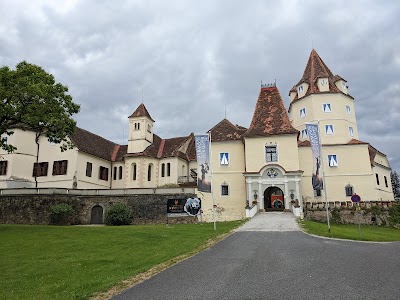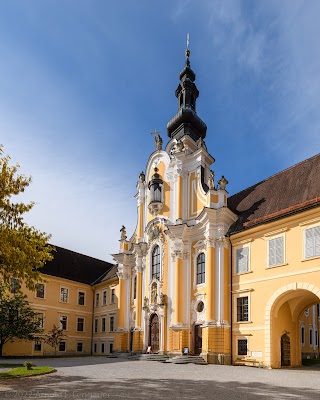Admont Abbey (Stift Admont)
Overview
Admont Abbey: A Jewel of Monastic Heritage
Admont Abbey, or Stift Admont, is a stunning Benedictine monastery nestled in the charming town of Admont, located in the picturesque Styria region of Austria. Founded in 1074 by Archbishop Gebhard of Salzburg, this remarkable abbey boasts a rich tapestry of history steeped in faith, education, and culture.
The abbey's location was strategically chosen in a serene valley along the Enns River, surrounded by the majestic Austrian Alps. This idyllic setting provided the perfect backdrop for monastic life. The initial construction featured simple stone structures that housed the first group of monks, who devoted themselves to prayer, study, and manual labor. These early buildings were modest yet functional, reflecting the austere lifestyle of the Benedictine order.
Over the centuries, Admont Abbey underwent numerous expansions and renovations, with a significant reconstruction following a devastating fire in 1865 that ravaged much of the complex, including its famed library. The abbey was gradually rebuilt with the generous support of the local community and benefactors, ensuring its continued prominence in the region.
The Baroque Library Hall: An Architectural Marvel
One of the crowning jewels of Admont Abbey is its breathtaking Baroque library hall, constructed between 1776 and 1777. Designed by the architect Joseph Hueber, this magnificent library embodies the Enlightenment ideal of harmonizing beauty with knowledge. Often referred to as the "Eighth Wonder of the World," it is the largest monastic library globally, measuring an impressive 70 meters long, 14 meters wide, and 13 meters high.
The hall's design features exquisite frescoes by Bartolomeo Altomonte, illustrating the stages of human knowledge culminating in Divine Revelation. Its awe-inspiring ceiling, adorned with seven cupolas, captivates visitors with its splendid artwork and grandeur.
Within the library, approximately 70,000 volumes await exploration, including religious manuscripts, scientific works, and cultural texts. Some of these books date back to the 8th century, showcasing an extensive collection of incunabula—books printed before 1501. This library stands as a testament to the monks' unwavering commitment to scholarly pursuits and the preservation of knowledge.
Architectural and Artistic Excellence
The architectural allure of Admont Abbey extends beyond the library. The abbey church, meticulously rebuilt after the fire, beautifully fuses Gothic Revival and Baroque elements. Its twin towers and ornate façade garner admiration from visitors. Inside, the church features magnificent altars, stunning frescoes, and intricately crafted woodwork that highlight the exceptional skills of the artisans who contributed to its design.
Additionally, Admont Abbey houses a museum that reflects its rich heritage. This museum showcases religious art, ancient manuscripts, and contemporary art collections, playing a vital role in educating the public about the abbey’s historical and cultural significance.
A Legacy of Education and Spiritual Growth
Throughout its storied history, Admont Abbey has served as a beacon of education and spiritual growth. The monks manage an extensive library, an important educational institution, and various social services that support the local community. During turbulent times, including wars and political upheavals, the abbey has remained a resilient hub of stability and peace.
Today, Admont Abbey continues to draw visitors from around the globe, not only for its breathtaking architecture and art but also for the tranquility and spirit of learning that permeates its walls. It stands as a remarkable legacy of monastic dedication, artistic achievement, and the eternal quest for knowledge.









